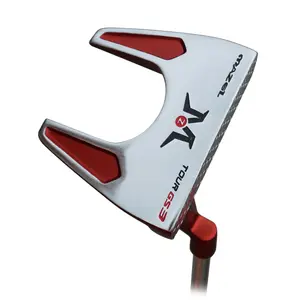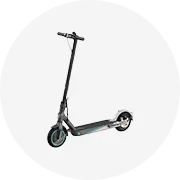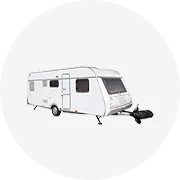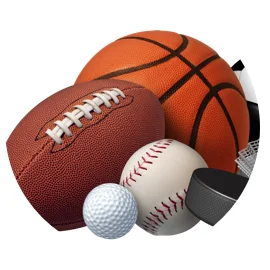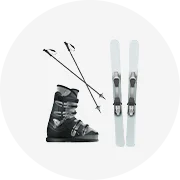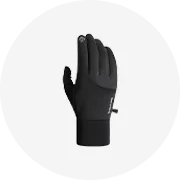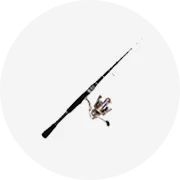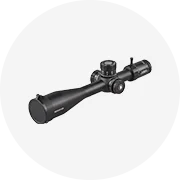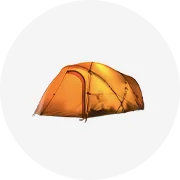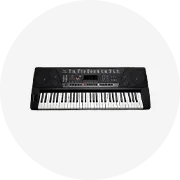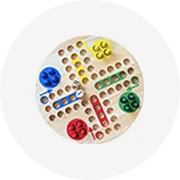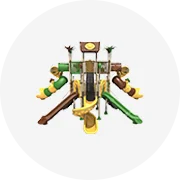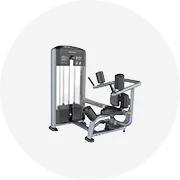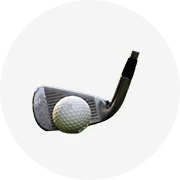Phổ biến trong ngành của bạn

Bán Sỉ Đĩa Đệm Cao Su Cạnh Tranh Tùy Chỉnh Đĩa Tạ Màu Hiệu Chỉnh Nâng Tạ
1,29 US$ - 1,35 US$
Đơn hàng tối thiểu: 1000 Kilogram


Rouser tập thể dục cao su Bumper tấm tạ tạ 5kg 10kg 15kg 20kg 25kg phòng tập thể dục hiệu chuẩn trọng lượng tấm bộ
1,39 US$ - 1,99 US$
Đơn hàng tối thiểu: 1000 Kilogram
Vận chuyển mỗi chiếc: 10,82 US$


TOPKO Sức Mạnh Tập Thể Dục Tấm Cho Bán Cao Su Trọng Lượng Tấm Thiết Lập
0,60 US$ - 1,20 US$
Đơn hàng tối thiểu: 1 Cái


Biểu Tượng Tùy Chỉnh 5Kg 10Kg 15Kg 20Kg 25Kg Trọng Lượng Tấm Cao Su Tráng Barbell Tấm Đĩa Gang Ba Grip Trọng Lượng Tấm
0,49 US$ - 0,58 US$
Đơn hàng tối thiểu: 4500 Pound


Nhà máy tùy chỉnh bán buôn phòng tập thể dục thiết bị tập thể dục cao su HEX quả tạ
0,40 US$ - 0,45 US$
Đơn hàng tối thiểu: 1000 Pound


Tùy Chỉnh Bumper Tấm 1.25Kg 2.5Kg 5Kg Tiêu Chuẩn Đúc Sắt Trọng Lượng Tấm 1 Inch Trung Tâm Lỗ Cho Barbell Quả Tạ Phẳng Tấm
0,87 US$ - 1,00 US$
Đơn hàng tối thiểu: 2000 Kilogram
Vận chuyển mỗi chiếc: 3,58 US$



Có Hoặc Không Có Bán Buôn Biểu Tượng Tùy Chỉnh Phòng Tập Thể Dục Trọng Lượng Tấm Hiệu Chuẩn 2 Inch Màu Đen Trọng Lượng Tấm TPU Bumper Tấm
1,40 US$ - 1,50 US$
Đơn hàng tối thiểu: 100 Kilogram
Vận chuyển mỗi chiếc: 17,88 US$

Nhân vật phản diện tập thể dục OEM Deluxe 2 inch kg hoặc lb cao su trọng lượng tấm fractional OLYM thay đổi bội thu tấm đĩa có thể điều chỉnh
5,80 US$ - 6,00 US$
Đơn hàng tối thiểu: 10 Cái

Tùy chỉnh 1 inch tiêu chuẩn gang Bumper tiêu chuẩn quả tạ trọng lượng tấm
0,90 US$ - 1,00 US$
Đơn hàng tối thiểu: 5 Kilogram

Bộ Đĩa Giảm Chấn Trọng Lượng 3 Inch Oem 2 1 Inch Dành Cho Cạnh Tranh Màu Đen Bằng Gang Đúc Bộ Lbs 1 Inch
100,00 US$
Đơn hàng tối thiểu: 2 Cái
Các tìm kiếm liên quan:
tấm trọng lượng tsa1 pound trọng lượng tấmtấm trọng lượng exceltấm trọng lượng 35mmtấm trọng lượng màu hồnggiá rẻ trọng lượng tấm nhà sản xuấttấm trọng lượng kích thước tiêu chuẩn1 tấm trọng lượnggiá rẻ trọng lượng tấm bángiá rẻ trọng lượng tấmtrọng lượng tấm với giánhựa trọng lượng tấm nhà cung cấptấm trọng lượng màutùy chỉnh trọng lượng tấm nhà sản xuất1 lb trọng lượng tấm

Hot bán snbo 5kg 25kg 2 inch vũ trường tiêu chuẩn gang trọng lượng tấm cho tập thể dục
0,85 US$ - 0,91 US$
Đơn hàng tối thiểu: 1000 Kilogram

Thiết bị tập thể dục Grip đen cao su Barbell với trọng lượng tấm xi măng 25 mét lỗ 1 inch
1,14 US$ - 1,30 US$
Đơn hàng tối thiểu: 500 Kilogram

Chrome tráng gang quả tạ/Barbell Tri Grip gang gazebo trọng lượng tấm trọng lượng tấm quả tạ trọng lượng tấm 1 inch
1,13 US$ - 1,82 US$
Đơn hàng tối thiểu: 1000 Kilogram
Vận chuyển mỗi chiếc: 187,95 US$

Bán buôn thể hình thể dục bền gang trọng lượng tấm 2 inch 5kg kim loại thiết bị tập thể dục PowerLifting pound trọng lượng tấm
0,97 US$
Đơn hàng tối thiểu: 100 Kilogram

Pu trọng lượng tấm OEM miễn phí Trọng lượng 2 inch 50 mét Tri Grip trọng lượng đĩa có thể điều chỉnh quả tạ Barbell Set
210,00 US$ - 250,00 US$
Đơn hàng tối thiểu: 100 Kilogram

Bán buôn phòng tập thể dục Trọng lượng nâng cao su Bumper tấm tiêu chuẩn màu đen 2 inch lbs kg Barbell tập thể dục thiết bị đào tạo trọng lượng tấm
10,90 US$ - 11,90 US$
Đơn hàng tối thiểu: 2 Cái

Tùy Chỉnh Giá Rẻ Nhựa Barbell 1 Inch Xi Măng Trọng Lượng Tấm Màu Đen Xi Măng Cát Đầy Nhựa Trọng Lượng Tấm
0,35 US$ - 0,65 US$
Đơn hàng tối thiểu: 1000 Kilogram

Nhà Máy Trực Tiếp Giá Nhà Phòng Tập Thể Dục Đào Tạo Nhựa Tráng Barbell 1 Inch Xi Măng Bumper Trọng Lượng Tấm Đen Barbell Đĩa
0,25 US$
Đơn hàng tối thiểu: 2 Kilogram
Vận chuyển mỗi chiếc: 47,27 US$

Đầy màu sắc 2 inch lỗ cao su 0.5/1/1.25/1.5/2/2.5/5 kg trọng lượng bội thu tấm
0,90 US$ - 1,30 US$
Đơn hàng tối thiểu: 1000 Kilogram

Nhà Máy gang trọng lượng tấm 1 inch Bạc mạ crôm quả tạ tấm
1,14 US$ - 1,20 US$
Đơn hàng tối thiểu: 1000 Kilogram

Bán Sỉ Đĩa Nâng Tạ Xi Măng Đa Kẹp 1 Inch Đĩa Trọng Lượng Để Tập Luyện Sức Mạnh
0,30 US$ - 0,32 US$
Đơn hàng tối thiểu: 100 Kilogram
Vận chuyển mỗi chiếc: 20,40 US$

Giá Rẻ Nhựa Barbell 1 Inch Xi Măng Trọng Lượng Tấm Màu Đen Xi Măng Cát Đầy Nhựa Trọng Lượng Tấm
0,35 US$ - 0,65 US$
Đơn hàng tối thiểu: 1000 Cái
Vận chuyển mỗi chiếc: 2,46 US$

Bán buôn Red Pink Bumper tấm trọng lượng tấm 1 inch cuộc sống tập thể dục trọng lượng tấm cho bán
0,25 US$ - 0,30 US$
Đơn hàng tối thiểu: 10 Kilogram

15kg 50kg 2022 thể thao tập luyện sắt Grip 2 inch tùy chỉnh đào tạo thách thức trọng lượng tấm
1,55 US$ - 1,80 US$
Đơn hàng tối thiểu: 10 Kilogram
Vận chuyển mỗi chiếc: 12,11 US$

Phòng tập thể dục đặt khay 1 inch 5lbs 20 kg có thể điều chỉnh quả tạ tạ trọng lượng tấm
Sẵn sàng vận chuyển
17,00 US$ - 56,80 US$
Đơn hàng tối thiểu: 2 Bộ
Vận chuyển mỗi chiếc: 660,36 US$

Thiết Bị Tập Thể Dục Trọng Lượng Tấm Dumbell 1 Inch Khỉ Feet Nâng Mad In America
55,20 US$ - 74,99 US$
Đơn hàng tối thiểu: 10 Cái

Tấm Trọng Lượng Bằng Gang Đúc Tấm Trọng Lượng Thanh Tạ Tiêu Chuẩn 28Mm 1 Inch 30Mm Tấm Trọng Lượng
1,10 US$ - 1,50 US$
Đơn hàng tối thiểu: 50 Kilogram

Chuyên Nghiệp Tập thể dục phòng tập thể dục gang trọng lượng tấm 1 inch cao su tráng gang 2 lỗ trọng lượng tấm đĩa 20 kg
0,80 US$ - 0,90 US$
Đơn hàng tối thiểu: 3000 Kilogram

Xinrui Đĩa Gang Đen Nặng 1 Inch Tập Thể Hình 2.5KG 5KG 7.5KG 10KG 15KG 20KG 25KG Tập Gym
3,70 US$ - 29,60 US$
Đơn hàng tối thiểu: 2.5 Kilomét

Bán buôn thiết kế mới 45 LB trọng lượng tấm bền 1 inch trọng lượng tấm Barbell với trọng lượng tấm thiết lập
1,85 US$ - 2,10 US$
Đơn hàng tối thiểu: 10 Kilogram

Trọng lượng tấm pounds Trọng lượng nâng 10 25 kg 5 kg thép Barbell 2 inch 20kg tiêu chuẩn 45lb Bộ gang đĩa
0,40 US$ - 0,60 US$
Đơn hàng tối thiểu: 1000 Kilogram

Hanan Phù Hợp 1 Inch Tiêu Chuẩn Trọng Lượng Tấm Và Có Thể Điều Chỉnh Quả Tạ Thanh Xử Lý Cho Nhà Phòng Tập Thể Dục Tạ Thiết Bị Phụ Kiện
Sẵn sàng vận chuyển
2,62 US$ - 3,85 US$
Đơn hàng tối thiểu: 50 Cái
Vận chuyển mỗi chiếc: 64,69 US$

Onestarsports thể dục cạnh tranh Bumper tấm LB Trọng lượng nâng 2 inch lỗ rắn gang trọng lượng tấm
0,79 US$ - 0,89 US$
Đơn hàng tối thiểu: 100 Pound
Vận chuyển mỗi chiếc: 23,48 US$

Tấm Cân Bằng Gang Cứng 2 Inch Hoặc 1 Inch Tấm Kẹp Oly Để Rèn Luyện Sức Mạnh Cử Tạ Và Thể Hình
1,10 US$ - 1,21 US$
Đơn hàng tối thiểu: 20 Kilogram

304 Thép Không Gỉ Fractional Bumper Tấm 2 Inch Trong Cặp Hoặc Đơn OB Trọng Lượng Tấm
7,95 US$ - 8,50 US$
Đơn hàng tối thiểu: 10 Kilogram

Tập thể dục & cơ thể xây dựng giá rẻ 1 inch trọng lượng tấm bán buôn
0,97 US$ - 1,03 US$
Đơn hàng tối thiểu: 3000 Kilogram
Vận chuyển mỗi chiếc: 47,00 US$

Phòng Tập Thể Dục Tập Thể Dục Tập Thể Dục 1 Inch Trọng Lượng Tấm 5Kg 10Kg 15Kg 20 Kg 25Kg Trọng Lượng Tấm Trọng Lượng Nâng Đĩa Cạnh Tranh
1,40 US$ - 1,80 US$
Đơn hàng tối thiểu: 100 Kilogram
Các danh mục hàng đầu
Giới thiệu về tấm trọng lượng 1 inch
Tìm nhiều tấm trọng lượng 1 inch. trên Alibaba.com và chọn một chiếc được sản xuất tốt để cung cấp thêm tính di động cho những người không thể đi lại bình thường. Giữ một chiếc ở nhà cho người già hoặc thành viên bị thương trong gia đình hoặc tìm một mẫu có thể hoạt động trong bệnh viện. Sử dụng tấm trọng lượng 1 inch. như một giải pháp thay thế nhanh hơn và hiệu quả hơn cho một chiếc xe lăn thủ công truyền thống. Thiết kế dành cho giới tính cho phép mọi người trưởng thành sử dụng những phương tiện tiện dụng này.
Tất cả tấm trọng lượng 1 inch. được cấp nguồn bằng pin và có thể được sạc lại để tiếp tục sử dụng. Hầu hết đều tự hành và có thể tự di chuyển mà không cần người sử dụng nỗ lực nào ngoài việc chỉ đạo. Người lái có thể tận hưởng cảm giác thoải mái tối đa nhanh hơn xe lăn mà không cần đi quá nhanh. Một số thiết kế có thể gấp lại được, khiến việc đóng gói và cất giữ chúng trở nên đơn giản. Mỗi chiếc đều chắc chắn và có thể dễ dàng nâng đỡ trọng lượng của hầu hết mọi người.
Mua tấm trọng lượng 1 inch. tại Alibaba.com và nhận được nhiều tùy chọn để giúp tìm ra lựa chọn hoàn hảo. Chọn một màu lý tưởng để tạo cho chiếc xe một chút phong cách cá nhân. Duyệt qua một số lựa chọn công suất và chọn một công suất không mất nhiều thời gian để sạc lại hoặc không cần quá nhiều năng lượng. Các bộ phận chất lượng đảm bảo mỗi chiếc xe tay ga sẽ cung cấp tuổi thọ sử dụng tuyệt vời.
Với tấm trọng lượng 1 inch. từ Alibaba.com, việc tìm kiếm một phương thức du lịch giá rẻ cho người khuyết tật trở nên dễ dàng. Mua một cái để sử dụng cá nhân tại nhà hoặc để trợ giúp chuyên môn cho bệnh nhân. Hãy tận hưởng một mô hình có vẻ ngoài đẹp và sẽ cung cấp mức hiệu suất lý tưởng.
Tất cả tấm trọng lượng 1 inch. được cấp nguồn bằng pin và có thể được sạc lại để tiếp tục sử dụng. Hầu hết đều tự hành và có thể tự di chuyển mà không cần người sử dụng nỗ lực nào ngoài việc chỉ đạo. Người lái có thể tận hưởng cảm giác thoải mái tối đa nhanh hơn xe lăn mà không cần đi quá nhanh. Một số thiết kế có thể gấp lại được, khiến việc đóng gói và cất giữ chúng trở nên đơn giản. Mỗi chiếc đều chắc chắn và có thể dễ dàng nâng đỡ trọng lượng của hầu hết mọi người.
Mua tấm trọng lượng 1 inch. tại Alibaba.com và nhận được nhiều tùy chọn để giúp tìm ra lựa chọn hoàn hảo. Chọn một màu lý tưởng để tạo cho chiếc xe một chút phong cách cá nhân. Duyệt qua một số lựa chọn công suất và chọn một công suất không mất nhiều thời gian để sạc lại hoặc không cần quá nhiều năng lượng. Các bộ phận chất lượng đảm bảo mỗi chiếc xe tay ga sẽ cung cấp tuổi thọ sử dụng tuyệt vời.
Với tấm trọng lượng 1 inch. từ Alibaba.com, việc tìm kiếm một phương thức du lịch giá rẻ cho người khuyết tật trở nên dễ dàng. Mua một cái để sử dụng cá nhân tại nhà hoặc để trợ giúp chuyên môn cho bệnh nhân. Hãy tận hưởng một mô hình có vẻ ngoài đẹp và sẽ cung cấp mức hiệu suất lý tưởng.


